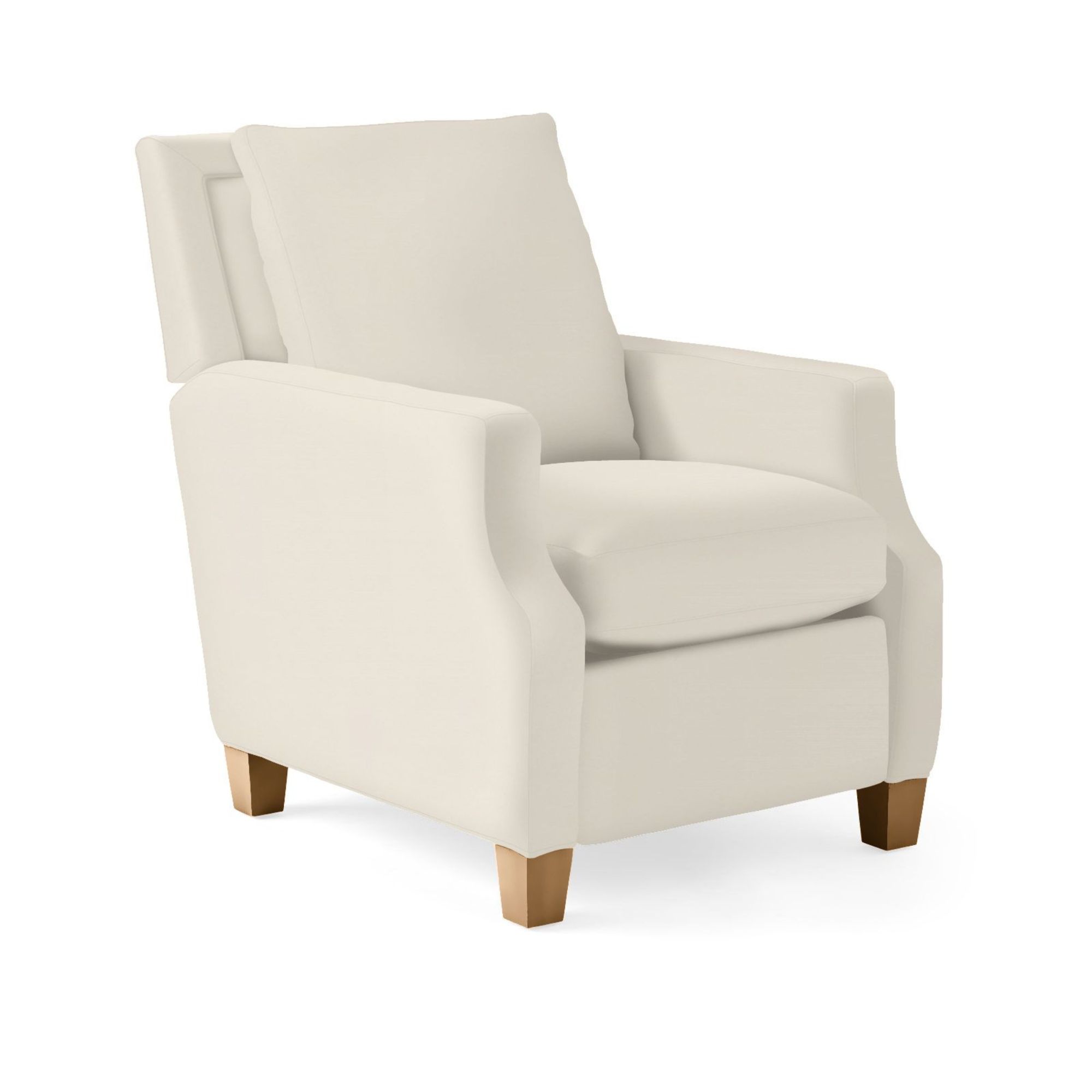9 interior designers on creating cozy rooms that your guests will never want to leave
Hosting season is here and these convivial spaces are great examples of how to make everyone feel welcome
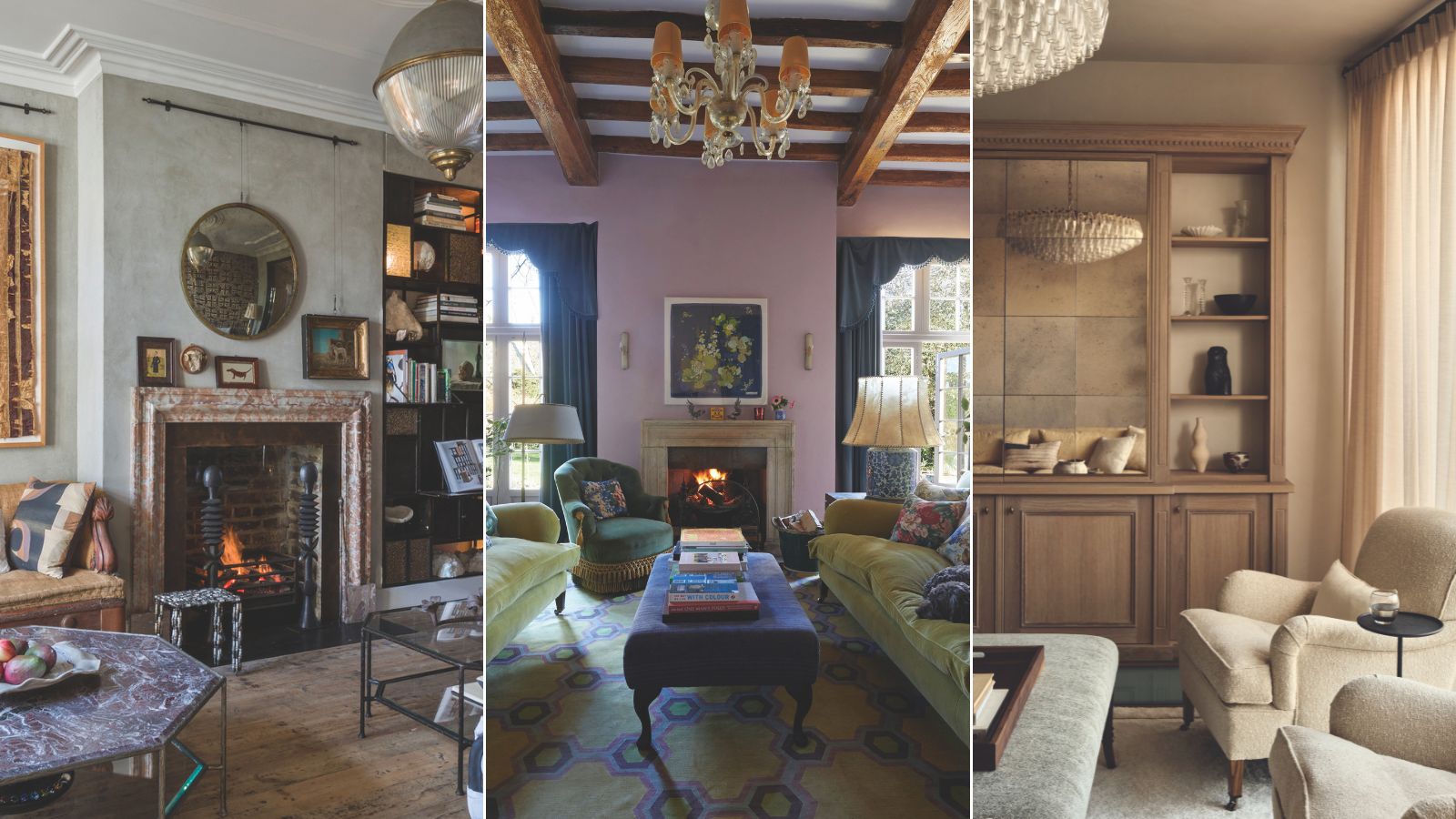
- 1. Build a soft nest
- 2. Layer up interesting elements
- 3. Create a cohesive color palette
- 4. Wrap the space with books
- 5. Fill the room with pieces that tell a story
- 6. Lean into architectural quirks
- 7. Create spots for deep conversations
- 8. Pair jewel-like color with cozy seating
- 9. Define your 'zones'

As the festive hosting season fast approaches, it's time to start thinking about how our homes feel to those who step inside. Of course, we want our friends and family who visit to relax and feel at ease, but we also want to create a space that becomes the backdrop to those special get-togethers that form long-lasting and life-enhancing memories.
With the input of a panel of best-in-class interior designers, we've broken down the decorating details that make your home look more cozy – forming the truly inviting living spaces that you and your loved ones deserve for your festive gatherings this season.
9 interior designers on creating the coziest spaces for your guests
With the help of the experts, we've identified some of the key details that always feature in spaces that feel truly welcoming and comforting. Read on to discover how to create a living space that will enhance the quality of your get-togethers.
1. Build a soft nest
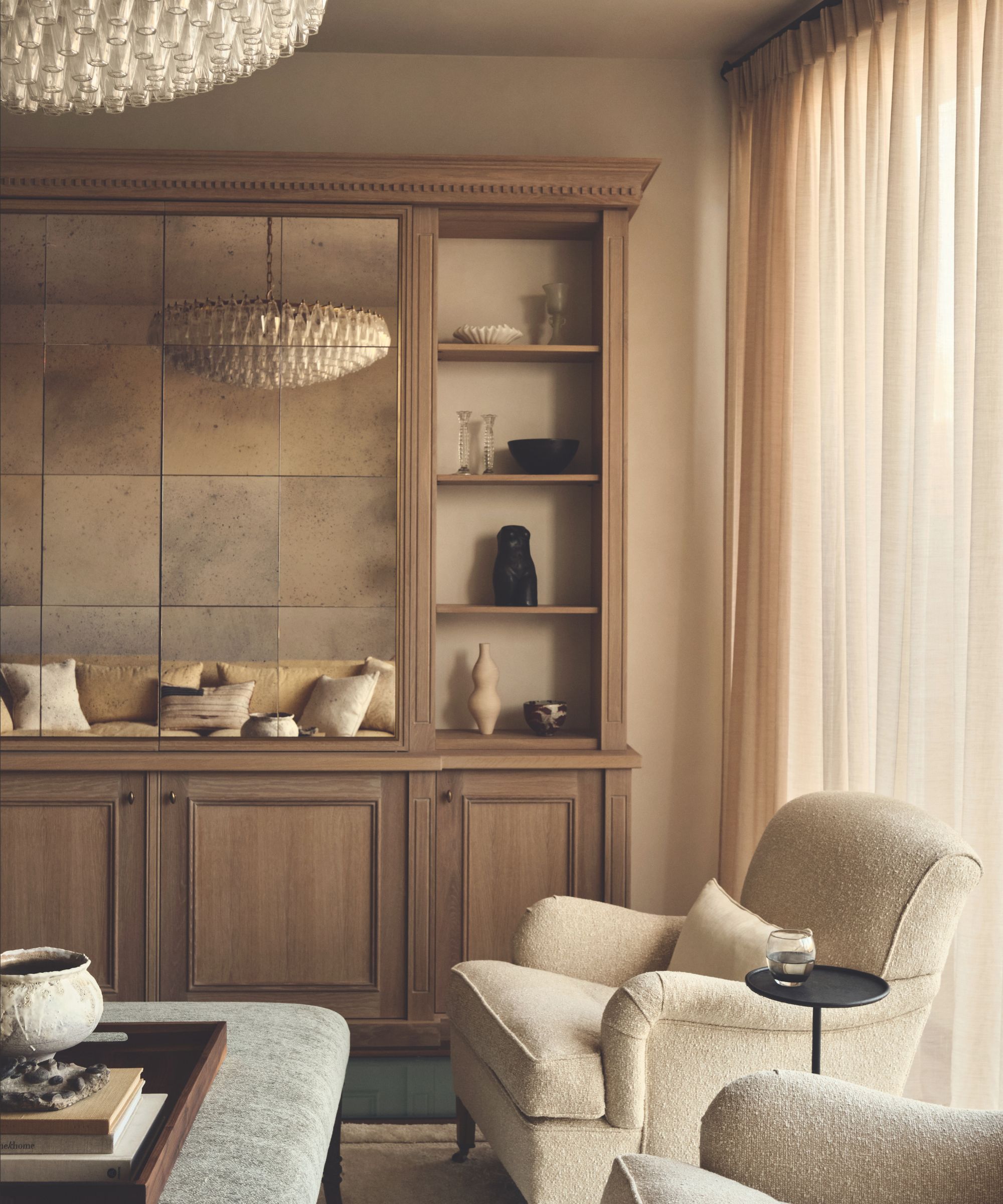
Textured or plastered walls and sheer flowing curtains are a clever way of introducing a gentle warmth to a space without turning up the dial on color or pattern. This living room, designed by Murudé, uses a pale neutral color palette, natural fabrics, and elegant finishes to create a serene and welcoming space.
Founder Murude Katipoglu says she chose the armchairs for their timeless design. ‘There’s something so familiar and inviting about the form of a simple and classic armchair,’ she says. ‘The antique mirror finish and brass detailing on the joinery layered with the opulent yet refined crystal chandelier add beauty and provide a soft golden glow in the room at night.’
2. Layer up interesting elements
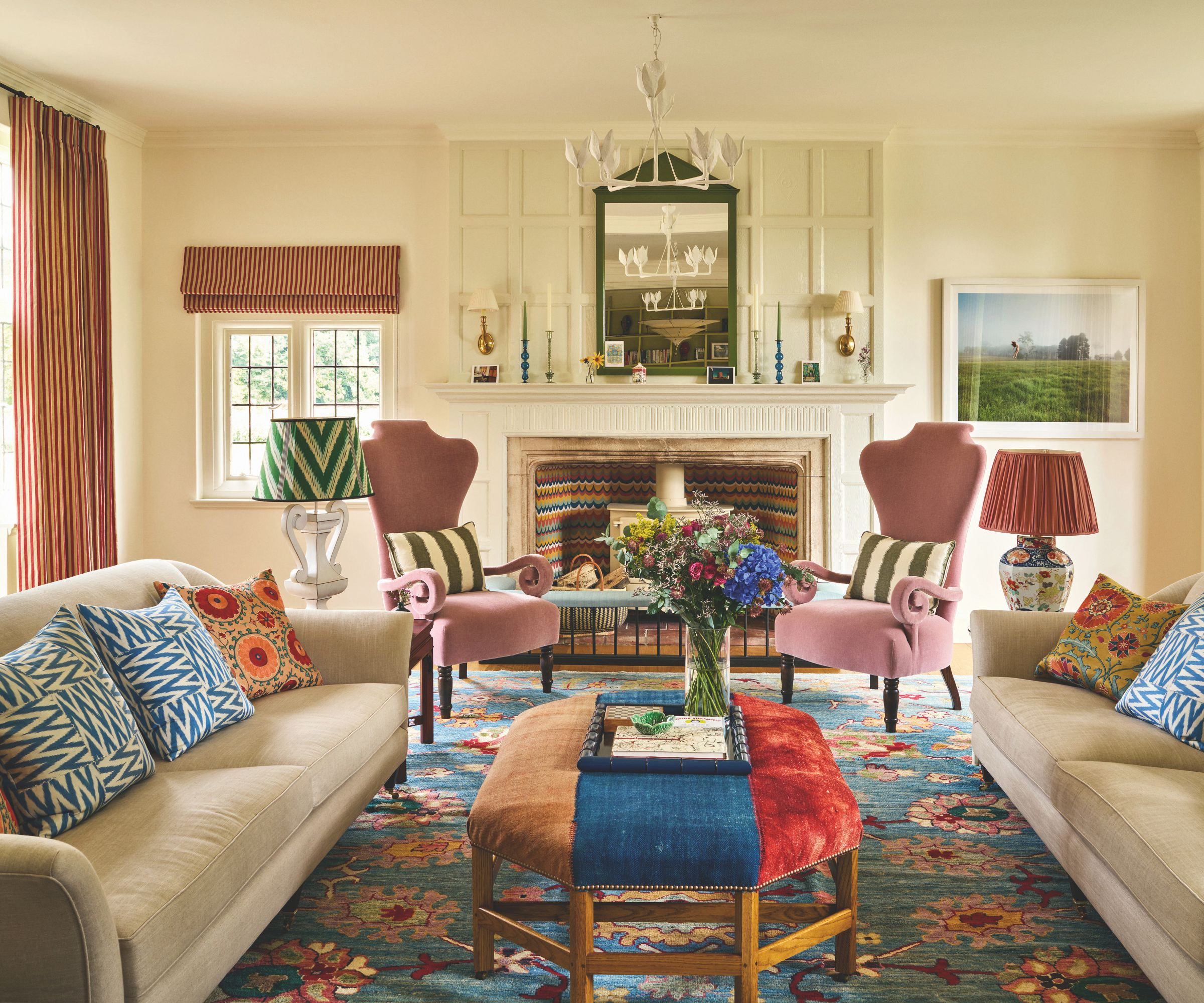
The key to creating a cozy feeling in a living room is to use a mixture of textiles and patterns with varying provenance – so believes Phoebe Hollond, creative director of Studio Hollond. ‘This living room, with its oversized fireplace, meant we had to work very hard to make the fireplace the focal point without having the furniture facing it.’
The solution was to design a pair of fireside chairs that seemed wild in scale and proportion. These were then married with a playful specialist paint effect inside the fireplace, which is based on a marbleized design. ‘Differing and antique lamps with beautiful bespoke silk shades help to create even more of a layered effect.’
3. Create a cohesive color palette
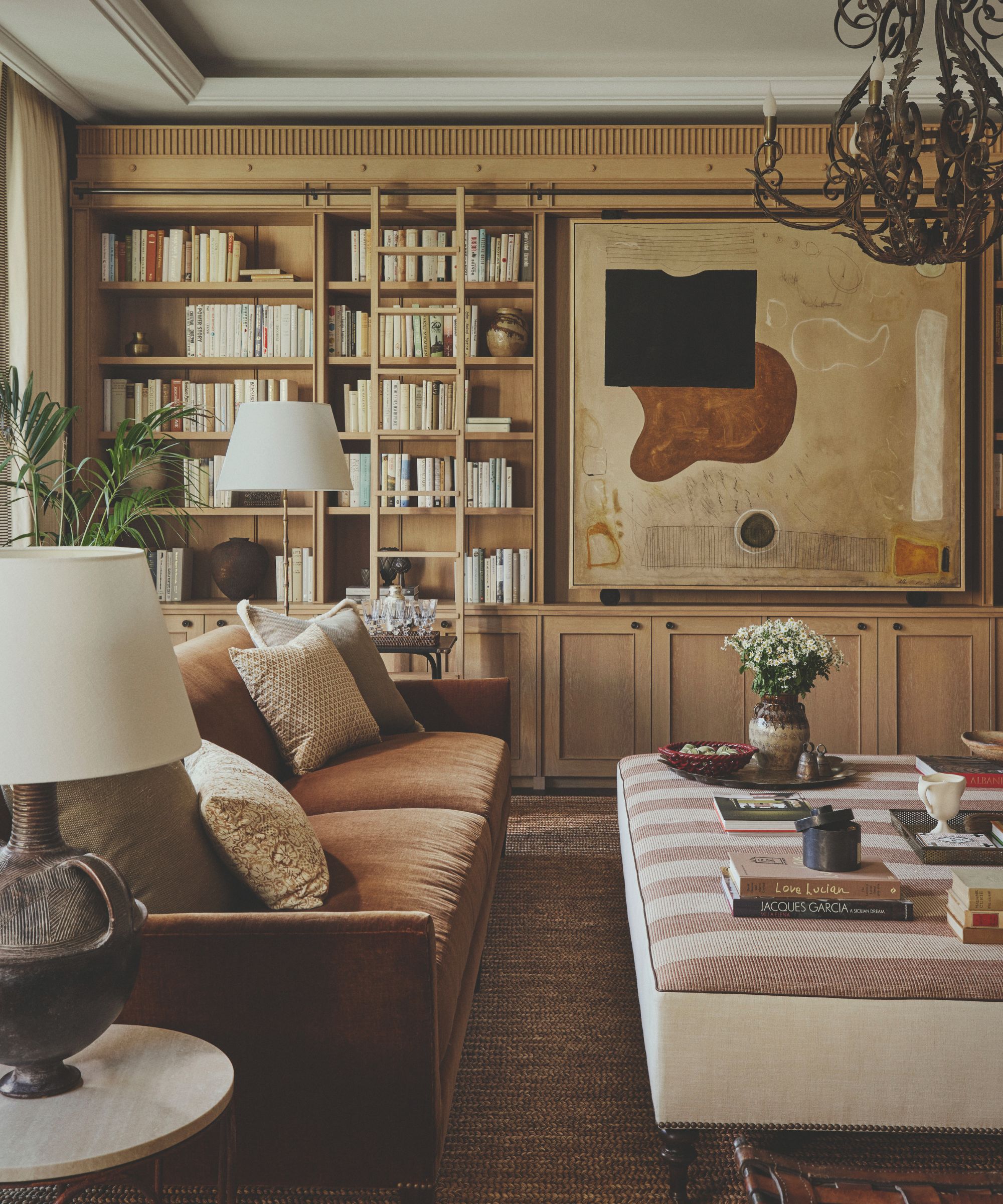
Keeping color contrasts to a minimum results in a space that’s easy on the eye. The trick to creating interest is to layer in textures, such as seagrass matting, velvet on the sofa, and leather on the stools. Here, the natural wood joinery on the wall sets the tonal pitch for this room for a house in Chelsea designed by Albion Nord.
It acts as both a library and a place to watch TV (the screen is revealed by sliding the artwork across). ‘We used joinery as a nod to the traditional purpose of the space while the artwork allows the room to maintain a contemporary feel,’ says the team at Albion Nord.
4. Wrap the space with books

Above and beyond their obvious strengths as a source of great pleasure, books crammed on shelves also muffle and absorb sounds, helping to contribute to a sociable atmosphere. This is the sitting room in Somerset of Philip Hooper, joint managing director, Sibyl Colefax & John Fowler, which houses his books in a bookcase of his design.
The alcove shelves are painted in a rich shade of red chosen to accentuate the colors of the spines. ‘And of course,’ adds Philip, ‘wherever one finds a book, there must also be a comfortable chair, a table, and a suitable light by which to read.’
5. Fill the room with pieces that tell a story
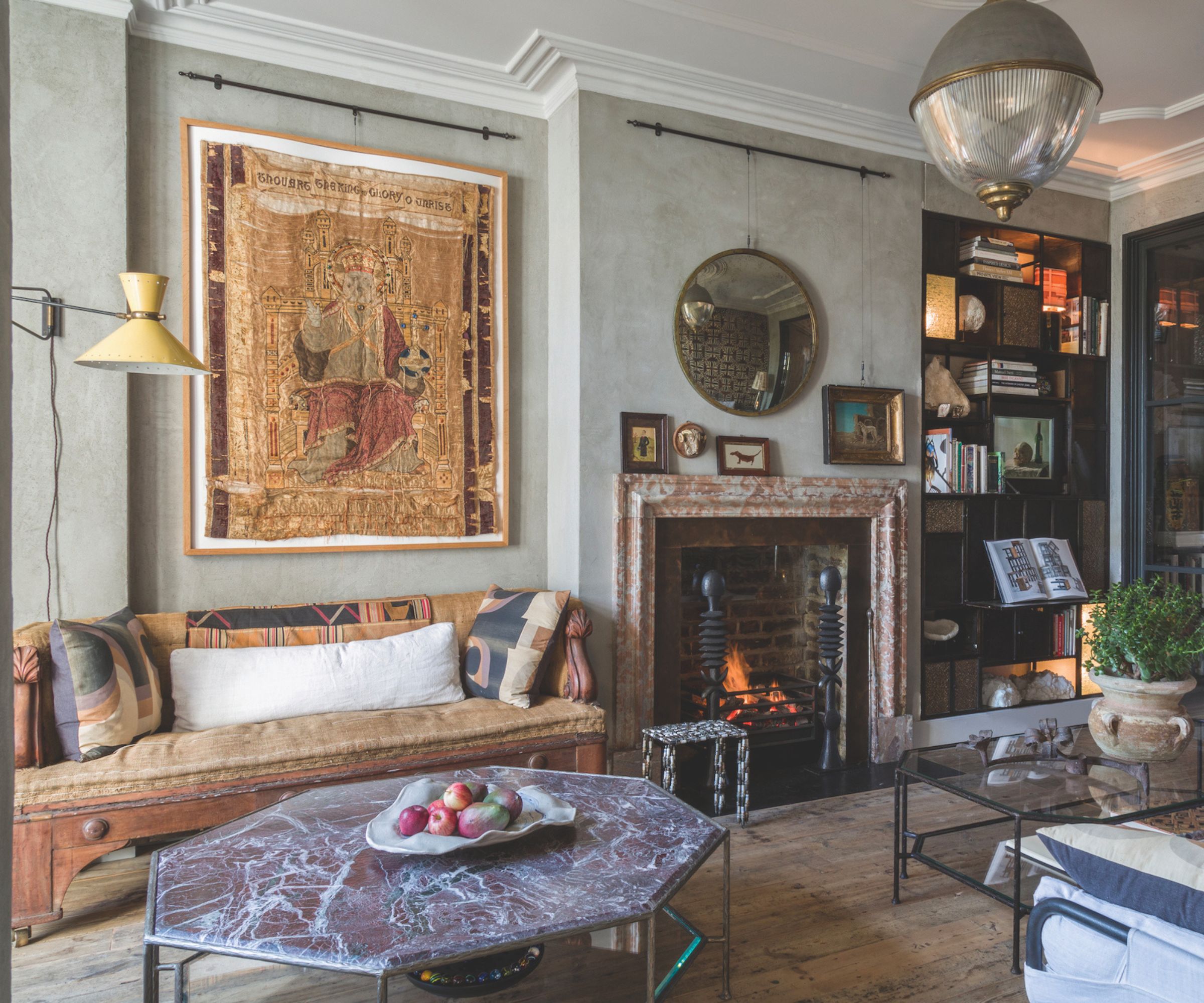
Any room used for entertaining should have several conversational pieces included. Not only to provide talking points but also to tell the narrative of the owners. This distinctive space, in the home of Cox London founders Chris and Nicola Cox, was two separate rooms, but now custom doors mean it can be opened up to create a versatile area.
It’s filled with the couple’s finds, including the hessian and jute sofa and cushions made from 1960s Barbara Brown fabric. ‘The reclaimed fireplace surround adds a layer of character, resonating with the centuries that have passed,’ they say.
6. Lean into architectural quirks
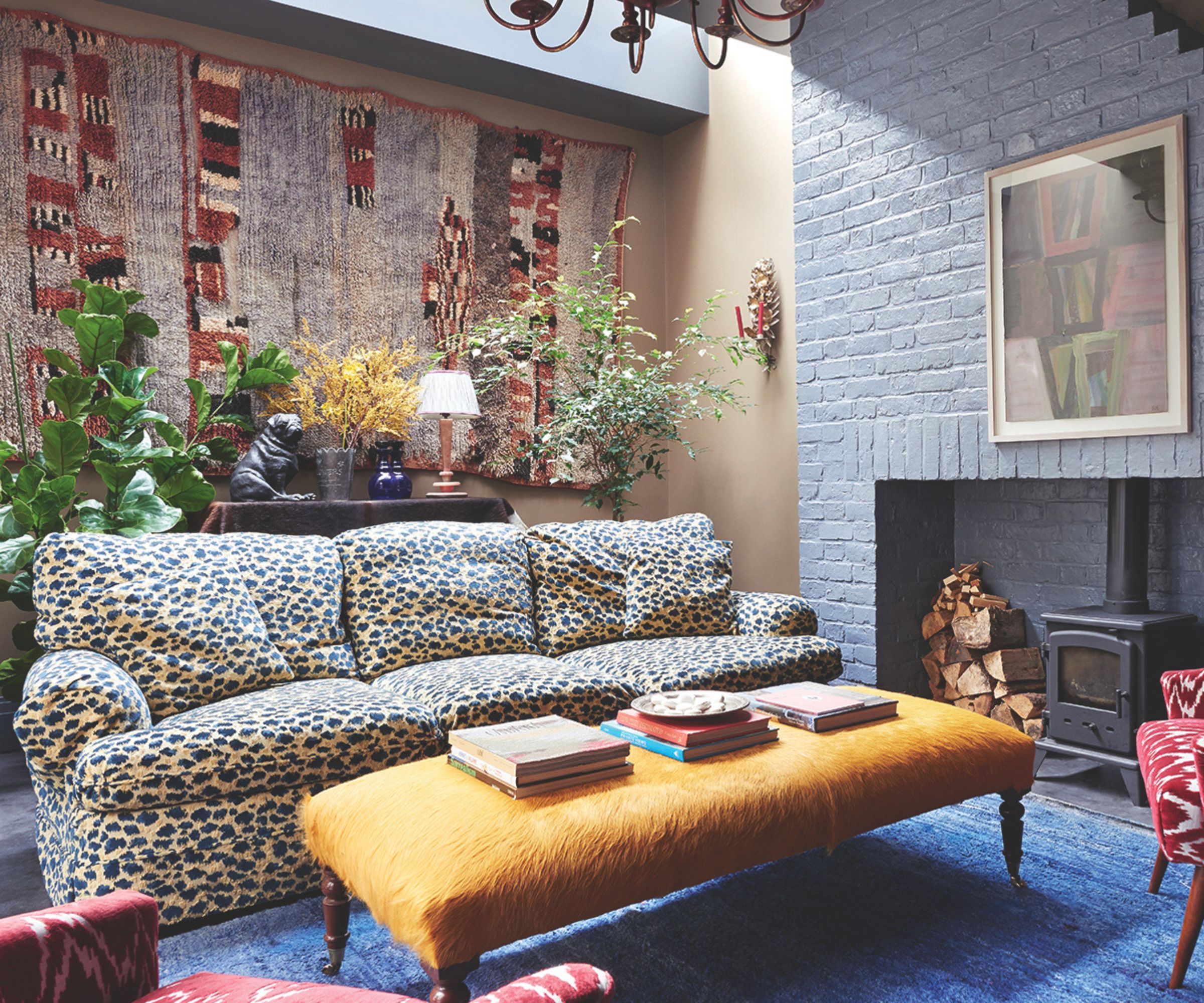
Artful decorative details that lean into the qualities of a room – be that an asymmetric ceiling, a diminutive size, or a lack of light – result in something both non-conformist and highly memorable. That’s what interior designer Rachel Chudley achieves with her schemes.
This living room is in her London home, which she created from a derelict Victorian workshop and described as being a canvas for some of her more ‘bonkers ideas’. The oversized fireplace forms a focal point; she arranged the brickwork, painted in silvery blue, to act as a chimney wall installation. Layers of color and pattern are created through the leopard print sofa, ikat chair, and sunshine yellow ottoman.
7. Create spots for deep conversations
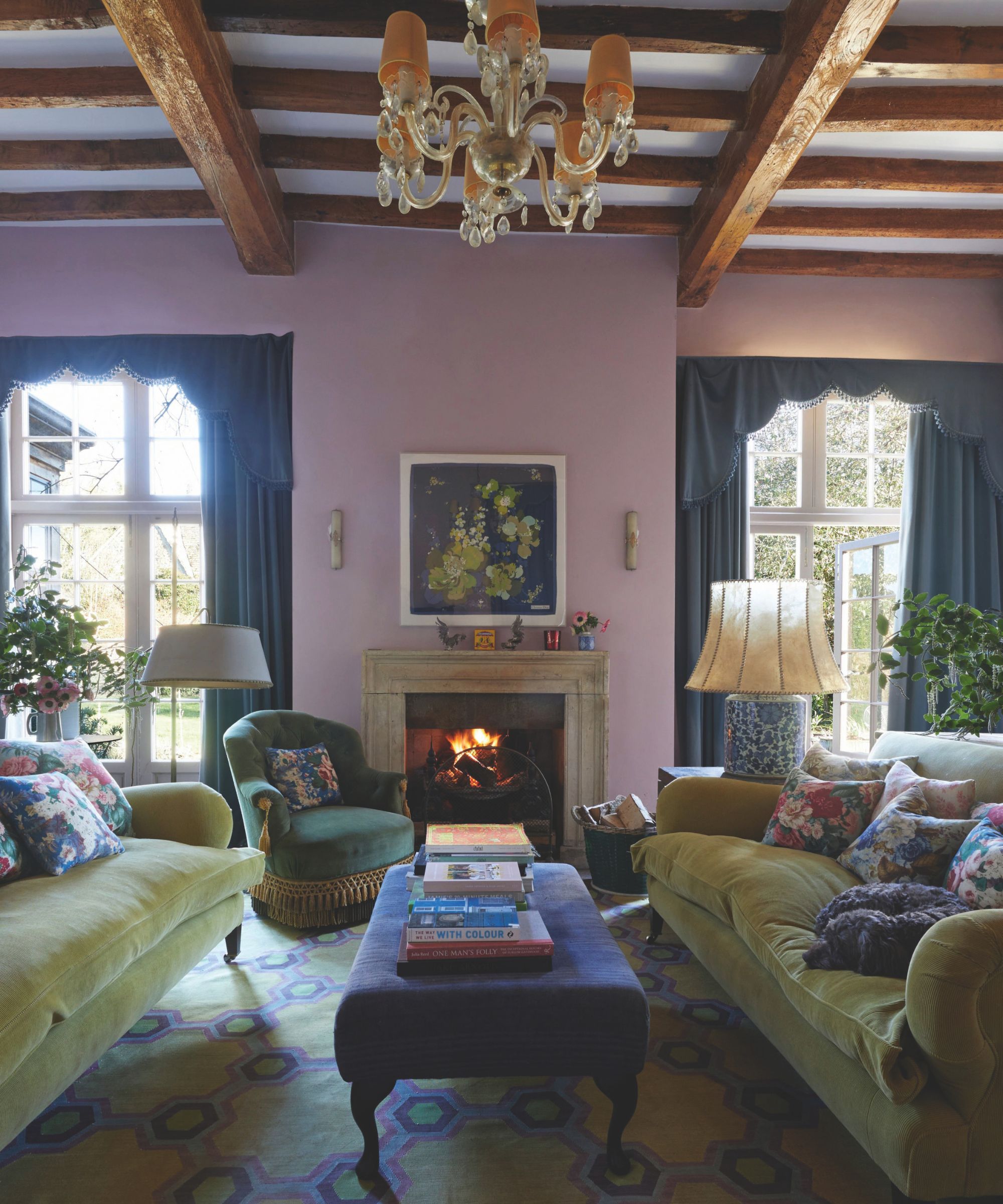
Keeping a space intimate creates an environment for good conversation, as people feel at ease rather than exposed. Another good idea is to embrace a touch of imperfection and avoid too much symmetry, as shown here with the chair by the fire.
Interior designer Nicola Harding believes that design always begins with a personal touch. ‘I place myself in the space and think about how I want to feel, crafting comfort and conviviality.’ She recommends using pieces from different periods to make a room feel dynamic and not too predictable. ‘And don’t forget atmospheric lighting – lots of it to evoke coziness.’
8. Pair jewel-like color with cozy seating
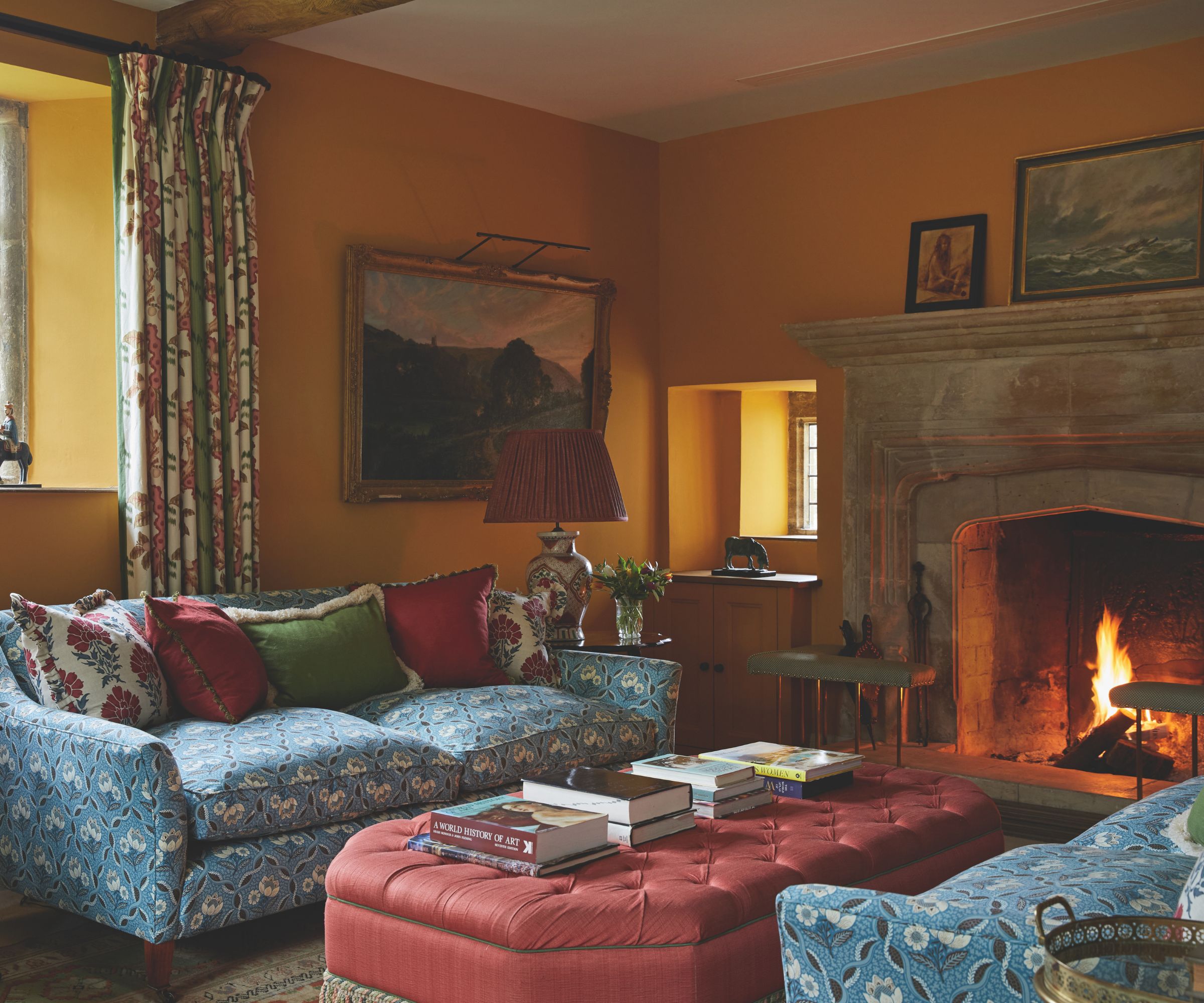
Where space is not an issue, deep sofas and lots of color create a supremely comfortable room. Octavia Dickinson calls this look ‘squashy English’ – and believes it’s something that every home needs. For this drawing room in Gloucestershire England, she used a deep historical paint shade on the walls then layered the space with patterns and prints, textures, and lamp light (as well as somewhere generous to prop up feet).
‘It’s all balanced, which lets the eye dot around the space but never jars,’ she says. ‘Rooms like these are very cozy and comfortable from autumn through to winter. They are spaces that glow and radiate warmth and light through the use of deep colors on the walls.
9. Define your 'zones'
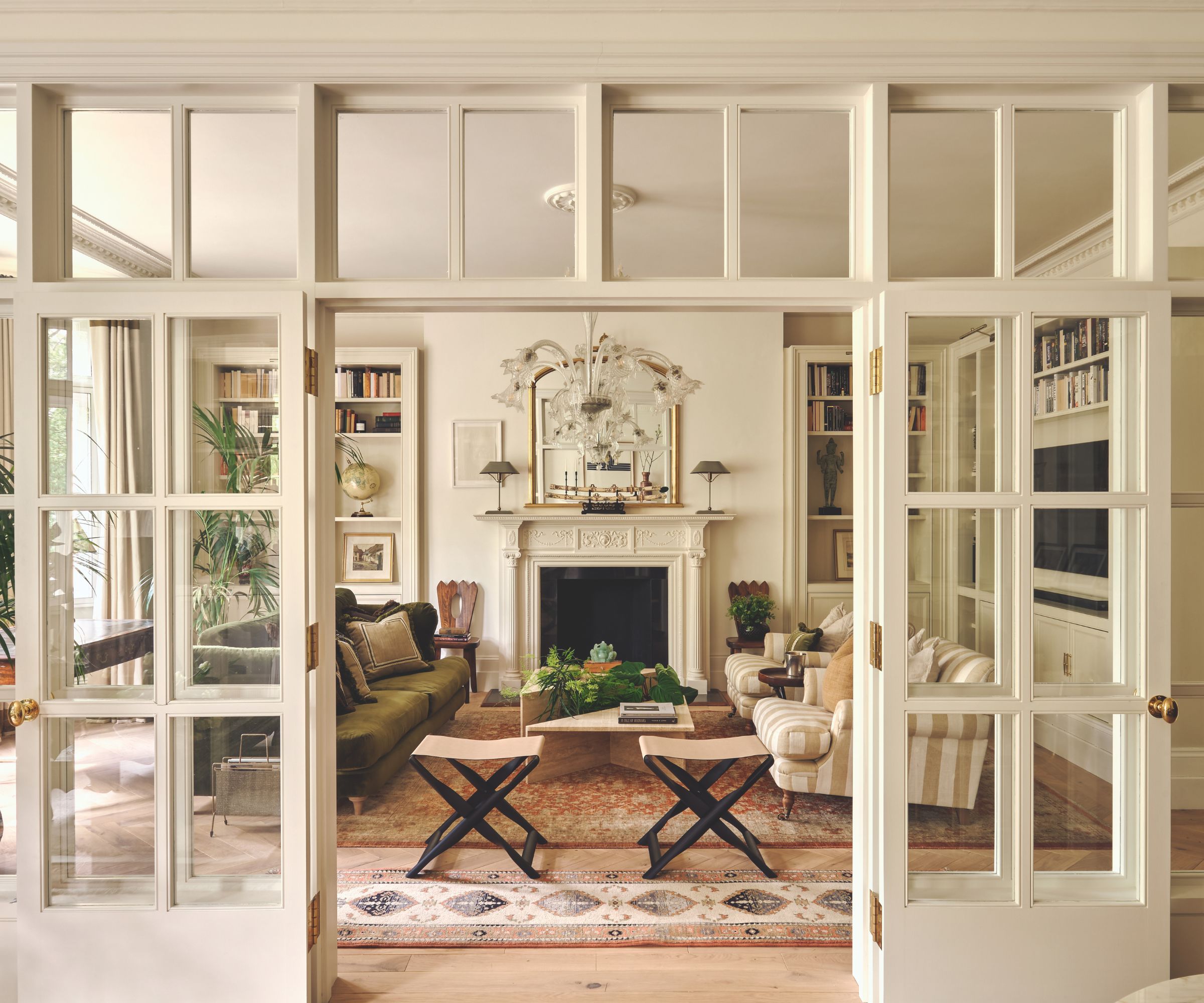
Formal entertaining rooms used to be hidden away for special occasions only but as the value of space – especially in the capitals – has increased, so has the desire to make sure each room in a house is used to its best advantage. Interior designer Anahita Rigby transformed this house in central London by removing the walls between the living room and dining room.
She replaced them with a wood-and-glass screen broken up by a pair of doors with hinges that fold back on themselves to make the most of the space. When they are closed, there is a zoning effect, so the sitting room feels cozy. The glazing helps the light to travel between the two rooms and the white-painted woodwork retains a sense of airiness.

Wall lights are a great way to create coziness by adding a gentle side glow. Use mood lighting over overhead task lighting when you have guests over to make your rooms more welcoming.
Texture, color, lighting, and zoning are all your friends when it comes to making a room feel cozy, but the most important thing is to inject your space with your personality. This is what your friends and family love you for, and seeing this reflected in your home, whether that's through objets you've collected, pieces you've made, or photographs you've taken, these are the details that will have them feel truly at home and lose track of time. You may want to have an impromptu guest bed nook at the ready.
Sign up to the Homes & Gardens newsletter
Design expertise in your inbox – from inspiring decorating ideas and beautiful celebrity homes to practical gardening advice and shopping round-ups.

Arabella is a freelance journalist writing for national newspapers, magazines and websites including Homes & Gardens, Country Life, The Telegraph and The Times. For many years she has specialized in writing about property and interiors, but she began her career in the early 2000s working on the newly launched Country Life website, covering anything from competitions to find the nation’s prettiest vicarage to the plight of rural post offices.
-
 Can you paint a metal roof? Experts warn this could make or break your ‘worthy’ DIY efforts
Can you paint a metal roof? Experts warn this could make or break your ‘worthy’ DIY effortsDone right, it'll improve energy efficiency and avoid corrosion
-
 Summer House's Lindsay Hubbard has a scent-scaping tip that will impress your impromptu guests – it will change how you host in 2025
Summer House's Lindsay Hubbard has a scent-scaping tip that will impress your impromptu guests – it will change how you host in 2025The reality TV star and new mom has teamed up with AirWick, and has shared that she loves to use different scents in different areas of the home

